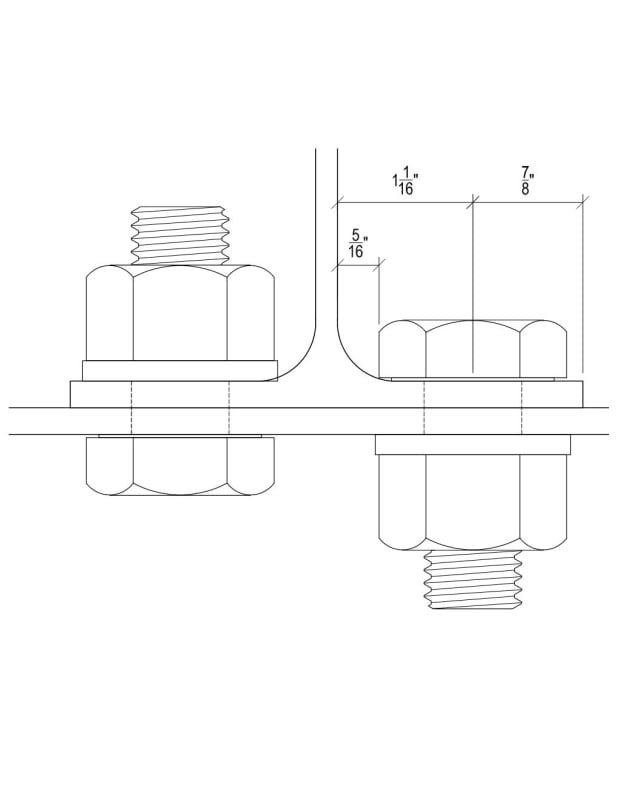There's 3 distances you need to concerned about when locating a bolt in a flange (using W8x10 w/ 3/4" Φ bolts in calcs below):
1.
Minimum edge distance per Table J3.4
Edge Distance = (bf - g)/2 = (3.94" - 2.25")/2 = 0.845" < 1"
Section J3.4 says "The edge distances in Table J3.4 are minimum edge distances based on standard fabrication practices and workmanship tolerances". This means there's some flexibility here, but it's not clear how much.
2.
Clear distance to the web - C1 per Table 7-15
Clear distance to web = (g - tw)/2 = (2.25" - 0.17")/2 = 1.04" < 1.1875"
C1 is the distance required to get a socket around the bolt or nut. It is equal to half the socket diameter of 2-1/8" plus 1/8". If this isn't met, then it may be possible to use wrenches instead.
3.
Clear distance to the beam fillet - C3 per Table 7-15
Clear distance to fillet = g/2 - k1 = 2.25"/2 - 0.5" = 0.625" < 0.75" for circular washer or no washer or 0.6875" for clipped washer
If this isn't met, the washer (or nut if there is none) will no longer be bearing on a completely flat surface so you may be inducing some flexure in the bolts or creating local points where the bearing stress is exceeded.
Using 5/8" Φ bolts with clipped washers or a beam with a wider flange is likely a better option since 3/4" Φ bolts don't meet any of the critical dimensions here.
DanKile said:
The 3/4" bolt head or washer might be getting into the fillet of the W8x10. I remember seeing where overlapping the fillet a small amount is ok. I was looking for that reference recently, but couldn't find it.
You might be thinking of Figure 10-3 which allows the free edge of plates or angles used in web connections to encroach on the fillet. They likely have a higher tolerance for some offset, though, since the free edge can bend out of plane, still leaving the area directly below the bolts flush. The bolts must have a flat surface so the values for C3 do not allow for any encroachment.
STRUCTURAL CENTRAL:
Steel Connections Software
Structural Engineering Videos
